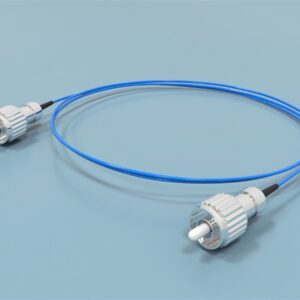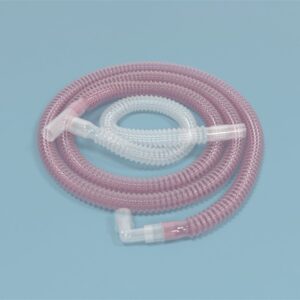$450.00

RWD is a global leader in the design and manufacturing of advanced research and laboratory equipment. Specializing in high-precision instruments for neuroscience, behavioral science, and pharmacology.



Sevoflurane: (2,2,2-trifluoro-1-(trifluoromethyl) ethyl ether) Halogenated ether that is a sweet-smelling, non-flammable fully fluorinated methyl isopropyl ether and has a molecular weight of 200.
While very similar, isoflurane and sevoflurane have slightly different effects and mechanisms of action, even though the anesthetic result is nearly identical.
100ml bottle.
Not for sale in the USA. Please inquire about availability
Sevoflurane was discovered by Ross C. Terrell and first introduced into clinical practice by Maruishi Pharmaceutic Co., Ltd. in Japan in 1990. It is one of the most widely used anesthetic agents among halogenated ethers. Sevoflurane is a non-pungent, low flammable, and non-irritant anesthetic agent that also offers the advantage of favorable blood gas distribution, low blood solubility, and rapid and smooth recovery.
| Formula | C4H3F7O |
| Molecular Weight | 200.056 g/mol |
| Density | 1.517–1.522 g/cm³ (at 20 °C) |
| Boiling Point | 58.5 °C (137.3 °F) |
| Vapor Pressure | 157 mmHg (20.9 kPa) (at 20 °C)197 mmHg (26.3 kPa) (at 25 °C) 317 mmHg (42.3 kPa) (at 36 °C) |
| MAC | 1.7–2.05 vol% |
| Other Properties | ColorlessNonflammable Liquid Mild, non-pungent odor |
| Blood: Gas Partition Coefficient | 0.68 |
Sevoflurane has a lower solubility in blood and body tissues than halothane. Regarding anesthetic potency, sevoflurane is about 50% less potent than isoflurane. The agent is readily degraded by carbon dioxide absorbents leading to nephrotoxicity in rats as a result of haloalkene by-products. Sevoflurane maintains cerebral metabolism at a reduced rate during anesthesia while preserving cerebral blood responsiveness to changes in arterial carbon dioxide tension. Sevoflurane also produces cerebrovasodilation and suppresses somatosensory-evoked potentials.
Sevoflurane is a dose-dependent cardiovascular depressant and does not increase the likelihood of cardiac arrhythmias induced by epinephrine. Further, the agent does not cause sympathoexcitatory activity or a rapid increase in inspired concentrations. Thus, sevoflurane allows a stable heart rate profile. The anesthetic agent permits rapid alteration of the depth of anesthesia since it produces a dose-dependent decrease in blood pressure. It has a negligible effect on coronary blood flow and is similar in effect to isoflurane on regional blood flow and systemic vascular resistance. Baroreflex function is also reduced by sevoflurane as seen in isoflurane anesthesia.
Sevoflurane has a significant dose-dependent effect on ventilatory depression that leads to a decreased minute, respiratory volume. It inhibits hypoxic pulmonary vasoconstriction and tracheal smooth muscle contraction thus permitting tracheal intubation without adjunctive neuromuscular blocking agents and laryngeal mask insertion. Sevoflurane does not cause significant irritation of the airway nor induce cough reflex.
The anesthetic agent undergoes dose-dependent hepatic biotransformation, primarily by cytochrome P450 (CYP) 2EI, with 1 to 5% of the absorbed dose of sevoflurane undergoing metabolism to liberate inorganic fluoride ions (F) and hexafluoroisopropanol (HFIP) as the principal by-products. Sevoflurane undergoes minimal renal defluorination.
Advantages
Disadvantages
Burns WB, Eger EI 2nd (2011). Ross C. Terrell, PhD, an anesthetic pioneer. Anesth Analg. 113(2):387-9. doi: 10.1213/ANE.0b013e3182222b8a.
Delgado-Herrera L, Ostroff R.D, Rogers SA (2001). Sevoflurance: approaching the ideal inhalational anesthetic. a pharmacologic, pharmacoeconomic, and clinical review. CNS Drug Rev. 7(1):48-120.
Patel S.S, Goa K.L (1996). Sevoflurane. A review of its pharmacodynamic and pharmacokinetic properties and its clinical use in general anaesthesia. Drugs. 51(4):658-700.
| Brand | RWD |
|---|---|
| Title | Default Title |
You must be logged in to post a review.
There are no questions yet. Be the first to ask a question about this product.
Monday – Friday
9 AM – 5 PM EST
DISCLAIMER: ConductScience and affiliate products are NOT designed for human consumption, testing, or clinical utilization. They are designed for pre-clinical utilization only. Customers purchasing apparatus for the purposes of scientific research or veterinary care affirm adherence to applicable regulatory bodies for the country in which their research or care is conducted.
Reviews
There are no reviews yet.